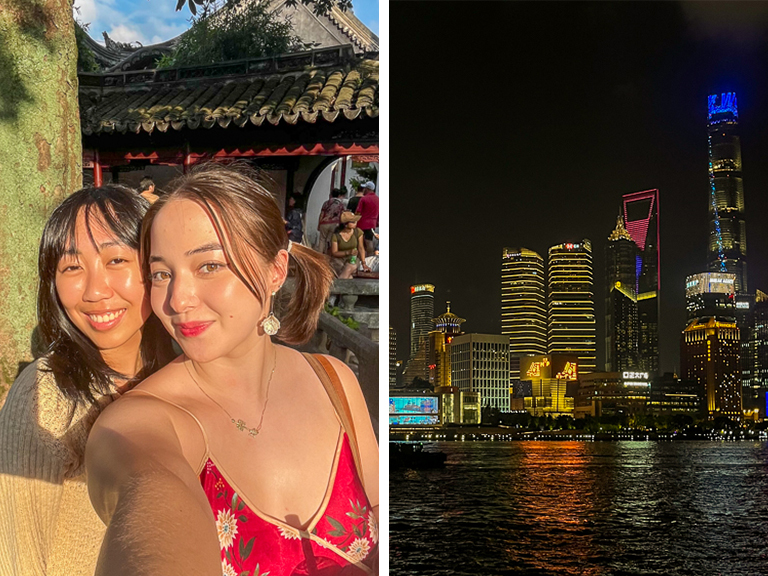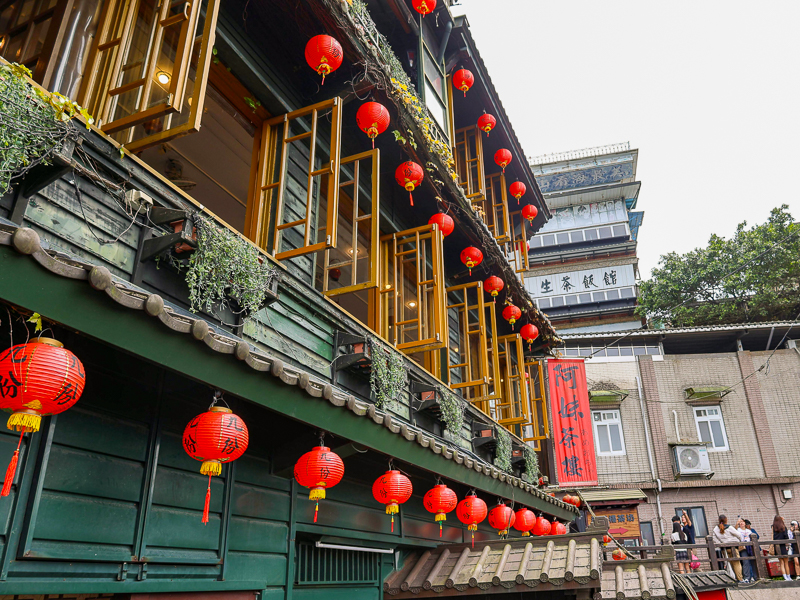
Eleven Months in Tokyo, Japan
When I was twelve years old, I made a promise to myself that I would study abroad in my father’s home country during college. That promise came to fruition this past school year. From September 2024 to July 2025, I studied abroad at Waseda University’s School of International Liberal Studies (SILS) in Tokyo, Japan. I accomplished this through the year-long Waseda University program under the University of California’s Education Abroad Program.
Before I left Berkeley, one of my roommates gave me a letter. In it she wrote, “You may not find exactly what you’re looking for in Japan, but you will find a great many things.” She was right. My time in Japan was not what I thought it would be, but I wouldn’t trade it for anything.
To learn about the logistics of studying abroad in Japan, and my experience studying abroad in a country I had an existing cultural connection with, keep reading.
The Basics of Study Abroad
If you’re here, you’re probably considering studying abroad. You can only apply to one UCEAP program per term, and many are first come, first served, so it’s important that you weigh your options carefully. Most students know to research whether their program of interest offers courses that correlate to their major requirements and/or general education requirements. There are several other factors to consider too, though.
Below are a few questions you can ask yourself to help determine which program is best for you. (Hint: Refer to each program’s details on the UCEAP website when pondering these questions!)
How important is it to me that I am in classes with regular students from my host university?
Out of my 14 units per semester, 6 units were required to be Japanese. Because many Japanese language classes at Waseda were only 1 unit each, more than half of my classes only had other international students in them. In contrast, my roommate who studied abroad at Trinity College in Dublin, Ireland this past year took her classes with regular Trinity College students.
If you want to prioritize taking classes with students from your host university, consider UCEAP programs that feature the tag “classes with local students.” It does offer a different immersion experience.
How important is it to me that I learn my host country’s language?
If your answer to this question is “very,” I highly recommend choosing a program that places strong emphasis on studying your host country’s language. These programs often feature the tag “language development.”
While my Waseda program didn’t feature the “language development” tag, much of my focus still went to learning Japanese, as mentioned above. I do believe that it’s only because I had to speak, read, and write Japanese in a rigorous academic setting nearly every day that my language skills improved as much as they did.
Something else important to note about Waseda’s Japanese language courses is that they’re all taught entirely in Japanese. I knew a few people who hadn’t learned the elementary hiragana alphabet before they came to Tokyo, so it took them a while to get their footing in the beginner classes.
How important is my GPA to me?
If there is any piece of advice you take away from this article, it’s this: Research how the grades you receive at your host university abroad will transfer back to UC Berkeley. This process is unique to each host university, and therefore each UCEAP program.
For my SILS at Waseda program, any letter grade I received automatically transferred back to UC Berkeley approximately one letter grade lower. My A+ became an A, my A became a B, and so on and so forth.
There’s somewhat of a myth that studying abroad is an easy way to pad your GPA, but this isn’t always the case. Be vigilant and research your programs thoroughly!
Adapting to Academics
It took me a couple of months to settle into academic life at Waseda. I struggled the most with my advanced Japanese language courses, which used textbooks that felt hieroglyphic and had complicated grammatical patterns.
When it comes to teaching the Japanese language, American universities tend to prioritize listening comprehension and speaking. Japanese universities, on the other hand, focus heavily on reading and writing comprehension. My upbringing as a Japanese American had also widened the gap between my speaking proficiency and literacy; I grew up speaking casual Japanese with my family, but never formally learning it in school.
At one UCEAP-hosted event for students studying abroad in the Tokyo area, I told the UCEAP Waseda coordinator that I was under a lot of stress. She gave me advice that changed my outlook on my time abroad:「頑張るのは大切だが、頑張りすぎないで。」
“It’s important to work hard, but don’t work too hard.”
My advisor knew that if I focused too much on academics, I’d lose out on experiencing life and culture in Japan, which was the real reason I’d chosen to study abroad.
After that conversation, I resolved to make my homework sessions more enjoyable. I started frequenting cafes—something much more practical in Tokyo than Berkeley due to the lower prices and comparatively weak yen currency—and asking classmates to study with me so that I didn’t get lost in the grind. With time, my grades improved, and so did my attitude. I also got to sample an impressive number of teas, coffees, and sweets in the process.

Lattes and a Biscoff mont blanc from cafes around Waseda’s campus.
Another way I kept up my energy was by blocking out time for fun. I treated myself to cheap but delicious meals a few times a week, sang karaoke with friends, and headed into Shibuya or Shinjuku to see my brother and his coworkers on the weekends.

Nina (right) and a Japanese family friend, Wakana.
Travel, Travel, Travel
When my acceptance to UCEAP’s year-long Waseda program was confirmed, a friend studying abroad there at the time told me to plan for the long spring break. I didn’t fully understand what she meant until I got my academic calendar: First term ended on January 27th, and second term didn’t start until April 12th. I vowed to use my two-month break to the fullest and to visit as many places as I could throughout the whole year. I immediately started planning.
I have a friend from middle school whose New York University Shanghai Study Away program happened to overlap with my UCEAP Waseda program. I’ve always wanted to go to China, and I don’t get to see my friends from back home very often, so the choice was clear. Before classes officially started (but after I’d moved to Japan), I flew to Shanghai and spent four days exploring the city above the sea with her. Three months later, she visited me in Tokyo for Christmas.

Allison and Nina (right) in Shanghai, China.
By the time spring break rolled around, I had several trips lined up. My mother and I headed to Hokkaido in early February for the annual Sapporo Snow Festival. This ceremony for snow and ice has been held for 75 years, and it features intricate sculptures from both locals and skilled artisans from across the world.

Second prize at the Susukino Ice Sculpture at the 2025 Sapporo Snow Festival.
Just a few days later, my mother and I flew to Cambodia. The climate whiplash was a bit extreme, but the views were beautiful. We spent our days walking old Hindu-Buddhist temples, drinking lukewarm mint tea, and slathering on sunscreen.

Ruins and beaches in Cambodia.
In March, I visited my roommate, who was studying abroad at Trinity in Dublin, Ireland. I took advantage of an airline promotion and stopped over in Abu Dhabi, United Arab Emirates, on the way. (The highlight of that short but sweet adventure was definitely visiting the Sheikh Zayed Grand Mosque!) I arrived in Dublin incredibly sleep-deprived, but after a power nap, my roommate took me out to explore the city. Three days later, we flew to Edinburgh, Scotland, where we stayed in a hostel with other 20-somethings and played cards late into the night. This was one of the happiest weeks during my time abroad.

Architecture in Abu Dhabi, Dublin, and Edinburgh.
My last big trip happened in April. Four other UCEAP Waseda students and I headed to Taiwan, where we visited various neighborhoods in a whirlwind: Ximen, Jiufen, Shifen. I learned that I love loaded scallion pancakes and xiao long bao, but am not the biggest fan of cilantro and peanut brittle ice cream. I also learned that travel is much more affordable when you’re splitting lodging costs among five people.

Jiufen, Taiwan—one of the locations that inspired the architecture in Spirited Away (2001).
Connecting to Culture
Though I had rented an apartment just 15 minutes walking distance from campus, I often spent time at my grandparents’ house in Chiba, one of Tokyo’s neighboring prefectures. Early into my time abroad, my grandmother showed me a letter she’d received from the city hall. It was an invitation to my city’s seijinshiki, or Coming of Age Ceremony for 20-year-olds.
Neither of my older siblings had been able to attend their ceremonies because they were not in Japan at the right age. It was, in a way, divine timing that I’d chosen to study abroad my junior year. My grandmother started preparations immediately—securing a hairstylist, a kitsuke-shi (or professional kimono stylist), and a slot at the photo studio my family has gone to since I was a baby.
Come January, I was sitting in the cultural center of the city, dressed in fifteen layers of gauze and fabric and talking with people I hadn’t seen since my family moved in with my grandparents for three months when I was six. Having the opportunity to participate in a landmark event for Japanese young adults was truly a privilege. It was both the most and least “Japanese” I’ve felt in my life.

Snippets of Coming of Age.
Living in Japan changed my relationship with my ethnoracial identity. Before I came to Tokyo, I had this notion that living in my father’s country, studying the language intensely, and seeing my Japanese half of the family regularly would finally “make” me Japanese. If not that, it’d at least teach me how to “feel” Japanese. But my time abroad did not teach me how to be or feel Japanese. It didn’t teach me how to be or feel White American, or Japanese American, or biracial and bicultural, either. All it taught me is that the only thing I’ll ever be is myself. I might fit in more or less in certain contexts—linguistic, social, or geographic—but I’ll always be the same person.
Wherever you go, there you are.

Nina (right) and her cousin, Kanon.
Final Tips & Well Wishes
Summarizing my year abroad in just a few pages is impossible, but I tried my best. I am so, so grateful to have had the opportunity to live and study in Japan, spend time with my family, and explore the prefecture my father himself went to university in.
Did this article make you curious about life in Tokyo or Japan at large? I hope so! If you’re considering taking the plunge and studying abroad there, here are my final tips:
- Prepare your finances! Learn how to budget and start saving today.
- Get ready to travel. Public transit is convenient and relatively affordable in Japan, and your commuter card will open up a whole new world. (Bonus: Google Maps tends to be the most reliable navigation app based on my experience.)
- Start your housing search early. It can be tricky to find places that won’t break the bank and are also within walking distance or a less-than-hour-long train ride from your school.
Best of luck out there, Golden Bears. 頑張って!
Nina Takahashi, Class of 2026, is majoring in film & media and minoring in Japanese and creative writing.
Want More?
- Read about Preslee’s experience interning abroad in Barcelona, Spain.
- Learn how to budget while studying abroad.
- Follow Rachel’s guide to make the most of your study abroad experience.